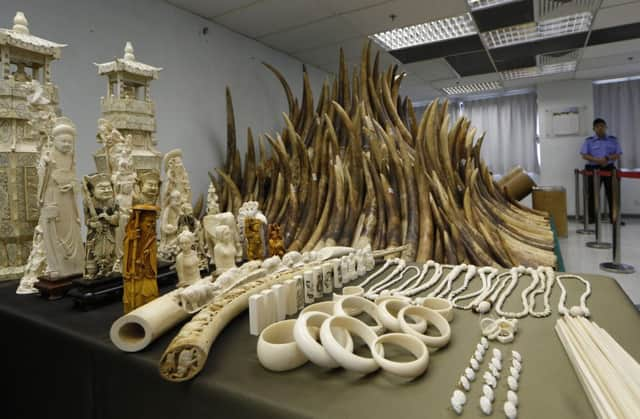Ivory ‘smuggled out of Africa on president’s plane’


The London-based Environmental Investigation Agency (EIA) alleges Chinese-led criminal gangs conspired with corrupt Tanzanian officials to traffic huge amounts of ivory, some of which was loaded in diplomatic bags on to Mr Xi’s plane during a March 2013 presidential visit.
In a report, the EIA said it had learned as early as 2006 that some staff at the Chinese embassy in Tanzania were major buyers of illegal ivory. It said Chinese officials and commercial figures in the entourage used the 2013 state visit to buy so much ivory that local prices doubled.
Advertisement
Hide AdAdvertisement
Hide AdTwo traders claimed Chinese buyers, two weeks before the visit, began purchasing thousands of kilograms of ivory later sent to China in diplomatic bags on the presidential plane, the EIA report said.
“Your president was here,” one of the traders told investigators in secretly filmed video footage. “When he was here, many kilos go out. When the guest come, the whole delegation, that’s time … the business go out.”
Another ivory dealer made a similar claim about the entourage of former Chinese president Hu Jintao on his 2009 state visit. “Then they go direct to the airport, because VIP no-one checks your bag,” the dealer said.
CONNECT WITH THE SCOTSMAN
• Subscribe to our daily newsletter (requires registration) and get the latest news, sport and business headlines delivered to your inbox every morning
One dealer, the EIA said, boasted of selling $50,000 (£30,000) of ivory to Chinese navy personnel during an official visit to the Tanzanian port of Dar-es-Salaam. A Chinese national was later caught trying to enter the port with 81 tusks meant for two Chinese navy officers.
If true, the accusations make a mockery of Beijing’s public efforts to end the illegal trade that has led to widespread elephant poaching throughout Africa.
However, China’s foreign ministry denied the EIA report. Spokesman Hong Lei said China had “consistently” opposed poaching and has sought to crack down on ivory smuggling.
“The report is groundless, and we express our strong dissatisfaction,” Mr Hong said.
Advertisement
Hide AdAdvertisement
Hide AdMeng Xianlin, director general of the Endangered Species Import and Export Management Office of China, rejected claims a Chinese delegation had been involved in smuggling ivory.
He said: “I don’t think there’s hard evidence, and I have not seen such cases. Allegations without evidence are not believable, and I don’t think it is appropriate for [the EIA] to come up with this mess.”
He claimed the EIA had been “unfriendly to China for quite some time,” calling the allegations irresponsible.
China is the world’s largest importer of smuggled tusks, and Tanzania is the largest source of poached ivory, the EIA said.
Poaching in Tanzania alone has killed half of its elephants in the past five years, the report said.
The illicit trade exploded in China after 2008, when Beijing was permitted to purchase 62 tons of ivory under the Convention on International Trade of Endangered Species.
The purchase was presented as a way to keep alive China’s traditional artisan ivory carving industry. A state-owned enterprise was authorised to sell the legal ivory to about 200 licensed factories and vendors.
But after legal pieces started showing up in shops, ivory quickly became a status symbol in China, a country where carved ivory has traditionally been prized as much as gold in the West. Critics claim the legal stockpile of ivory has since provided a convenient cover for a thriving black market.
SCOTSMAN TABLET AND IPHONE APPS